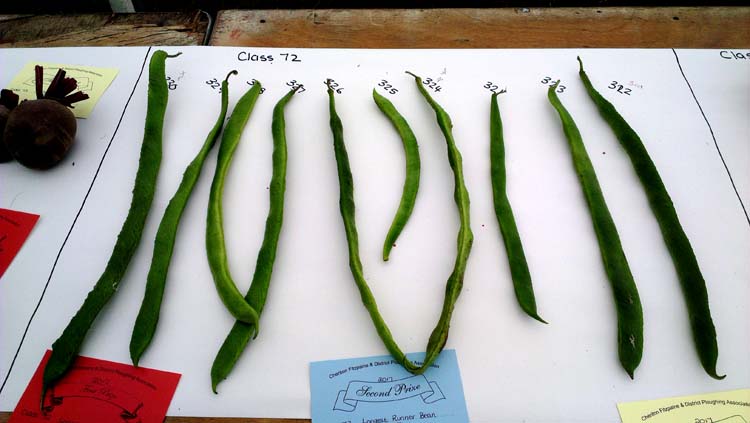 We have been lucky this week. The days have been bathed in a soft autumn light picking out all the shades of bronze and gold in the fading leaves. On the old tythe maps the parish was covered in orchards and nursery gardens. It must have been beautiful at this time of year. One of the parks near our house has a special link to horticultural history. As part of my beating the bounds project (read about it here, here, here, and here) I have been learning a bit more about it.
We have been lucky this week. The days have been bathed in a soft autumn light picking out all the shades of bronze and gold in the fading leaves. On the old tythe maps the parish was covered in orchards and nursery gardens. It must have been beautiful at this time of year. One of the parks near our house has a special link to horticultural history. As part of my beating the bounds project (read about it here, here, here, and here) I have been learning a bit more about it.
This park was once the grounds of a magnificent commercial plant nursery started by a man named William Lucombe, and the first in the South West of England. I would have loved to have seen the nursery in its hey day. In the nineteenth century the nursery was renowned for its vast glasshouses filled with orchids, gardenias, and rare palms. William Lucombe himself is best known for breeding the Lucombe Oak, of which I hear, there is a splendid example in Kew Gardens. The Lucombe Oak is a hybrid between the Turkey and Cork Oak (no that means nothing to me either). Apparently William planted lots of these oaks around his nursery but they must have all been felled because there are no oaks in the park now. Lucombe lived to a grand old age of 102 years old, and kept planks from the original hybrid tree to make his coffin. According to Wikipedia, William kept the planks under his bed, where they eventually rotted in the Devon damp, but many an urban myth has been started by Wikipedia so who knows! All that is left of the nursery are some enormous yew hedges and the most majestic wisteria arch you have ever seen. It is 135 feet long, supported by a metal framework and is a local celebrity in its own right.
The other week I was able to go even further back in to the history of this park. My mum had been regaling one of her friends at her quilting class with my passion for local history. This particular friend is 91 and grew up in the parish where we now live. She is also a bit of a local history buff too and kindly sent photocopies of her research via my mum, for me to peruse. She had traced the roots of our parish right back to the first Saxon settlers who cleared a patch of land out of the forest.
The Saxon farmstead in question stood up on the hill above the park. There is a Tudor manor house (converted to a pub) well known for its secret passages and hidey-holes, that now stands on the spot. Over time the Saxon farmstead developed into a settlement and a little church was built there. In medieval times the land at the bottom of the hill (now the park) was cleared to form water meadows, and around these meadows monks would have walked on daily trips between the old Saxon church and their priory down by the river. Hence the name of the modern road that occupies the same route, Church Path Road.
My favourite fact in all this concerns Roly-poly hill. The old paths I have followed on my beating the bounds walks up over the hill to join the Saxon road on the ridge, run along the boundaries of some allotments. According to my mum’s friend’s research, those allotments occupy the very same field first cleared by the Saxons. I love that. The first patch of land in this parish where someone staked a claim, put down roots (literally!), and started to build community, is worked and loved by the community to this day.
 The skies are leaden and the day is blustery. The radio regales me with dire weather reports from Scotland; wind, rain and the chance of snow at rush hour tomorrow. Meanwhile I sit snugly at my desk and press Send on Finch’s school application. That’s right, no pen and paper required, it’s all electronic now. I hesitated over that last click. I have a friend who is completely unsentimental about moments like these. She waved her youngest son off to school with glee and went home to put her feet up, but that’s not how my heart works. It definitely registers; with a funny emotional mixture of nostalgia, pride, relief, and sadness.
The skies are leaden and the day is blustery. The radio regales me with dire weather reports from Scotland; wind, rain and the chance of snow at rush hour tomorrow. Meanwhile I sit snugly at my desk and press Send on Finch’s school application. That’s right, no pen and paper required, it’s all electronic now. I hesitated over that last click. I have a friend who is completely unsentimental about moments like these. She waved her youngest son off to school with glee and went home to put her feet up, but that’s not how my heart works. It definitely registers; with a funny emotional mixture of nostalgia, pride, relief, and sadness.
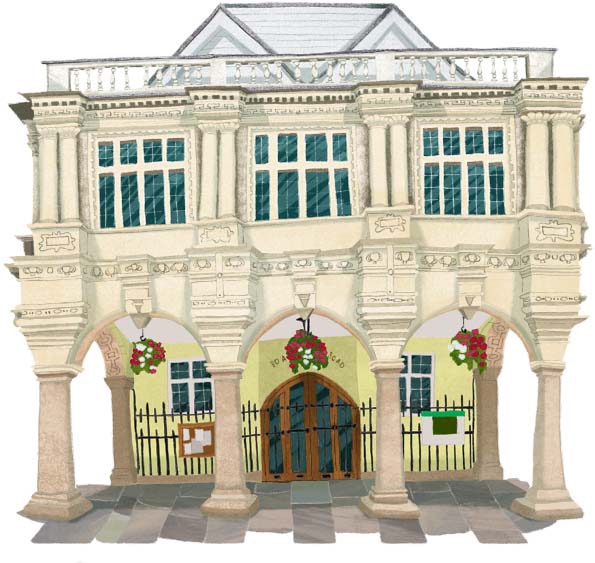 Over the last few months I have got involved with a group called
Over the last few months I have got involved with a group called  Rain pounded down all day yesterday. My pink geranium, still flowering copiously in the shelter of the side return, looked a bit absurd against such a grey November backdrop. Funnily enough pink geraniums don’t appear in Margaret Erskine Wilson’s page on November from
Rain pounded down all day yesterday. My pink geranium, still flowering copiously in the shelter of the side return, looked a bit absurd against such a grey November backdrop. Funnily enough pink geraniums don’t appear in Margaret Erskine Wilson’s page on November from  We have been lucky this week. The days have been bathed in a soft autumn light picking out all the shades of bronze and gold in the fading leaves. On the old tythe maps the parish was covered in orchards and nursery gardens. It must have been beautiful at this time of year. One of the parks near our house has a special link to horticultural history. As part of my beating the bounds project (read about it
We have been lucky this week. The days have been bathed in a soft autumn light picking out all the shades of bronze and gold in the fading leaves. On the old tythe maps the parish was covered in orchards and nursery gardens. It must have been beautiful at this time of year. One of the parks near our house has a special link to horticultural history. As part of my beating the bounds project (read about it 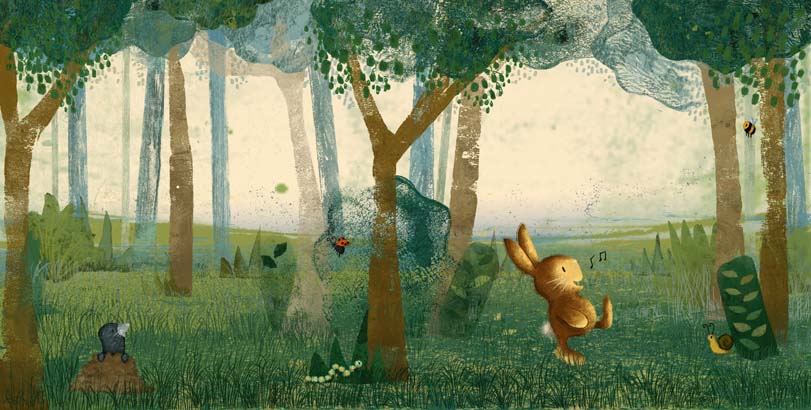 Finch has a cold and has been wandering around the house wheezing like a little train. It’s gone to his chest and he’s asthmatic. He clamped on some child’s ear defenders from the bottom of the toy box proclaiming that it helped his earache, then spent the rest of the day yelling at us. Outside the weather has been golden and mild. Little Owl collected red leaves in the park and made a bouquet, while humming ‘Santa Claus is coming to town’. Next week it will be back to school again and the mad tumble to Christmas will begin. For now, we are going to bake Delia’s
Finch has a cold and has been wandering around the house wheezing like a little train. It’s gone to his chest and he’s asthmatic. He clamped on some child’s ear defenders from the bottom of the toy box proclaiming that it helped his earache, then spent the rest of the day yelling at us. Outside the weather has been golden and mild. Little Owl collected red leaves in the park and made a bouquet, while humming ‘Santa Claus is coming to town’. Next week it will be back to school again and the mad tumble to Christmas will begin. For now, we are going to bake Delia’s 
 The weather was glorious at the weekend so we took the chance to get out on some lovely walks. We collected acorns, raced autumn leaves down a brook, crunched our way over beech husks, spotted a jay, and found a
The weather was glorious at the weekend so we took the chance to get out on some lovely walks. We collected acorns, raced autumn leaves down a brook, crunched our way over beech husks, spotted a jay, and found a  I’m so sorry to do this to you. I’m well aware it’s only October. Here goes…Christmas cards! There I’ve said it. I’ve got Christmas cards to sell. The reason I’m posting about them now is because I will be seeing my mother-in-law over half term so I can pass on any northerly deliveries to her should any of my lovely regulars up there want any.
I’m so sorry to do this to you. I’m well aware it’s only October. Here goes…Christmas cards! There I’ve said it. I’ve got Christmas cards to sell. The reason I’m posting about them now is because I will be seeing my mother-in-law over half term so I can pass on any northerly deliveries to her should any of my lovely regulars up there want any.
 Ooo hang on, a bit busy with deadlines. Bear with me. In the mean time, look some of my tomatoes have actually ripened!
Ooo hang on, a bit busy with deadlines. Bear with me. In the mean time, look some of my tomatoes have actually ripened!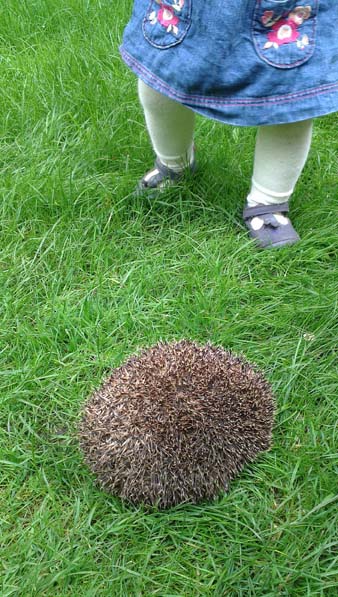 One evening last week our next-door neighbours found this hedgehog on their front doorstep, and it just wouldn’t go away. Our doorsteps are not particularly hedgehog-friendly as they are straight out onto the pavement so our neighbours couldn’t work out what was going on. The hedgehog didn’t seem to be injured but it wasn’t very keen on moving on either. At last they took it inside, put it in a cardboard box, gave it some cat food and wondered what on earth to do next. Cue a phone call to us to see if there was room in our hedgehog hotel for it.
One evening last week our next-door neighbours found this hedgehog on their front doorstep, and it just wouldn’t go away. Our doorsteps are not particularly hedgehog-friendly as they are straight out onto the pavement so our neighbours couldn’t work out what was going on. The hedgehog didn’t seem to be injured but it wasn’t very keen on moving on either. At last they took it inside, put it in a cardboard box, gave it some cat food and wondered what on earth to do next. Cue a phone call to us to see if there was room in our hedgehog hotel for it.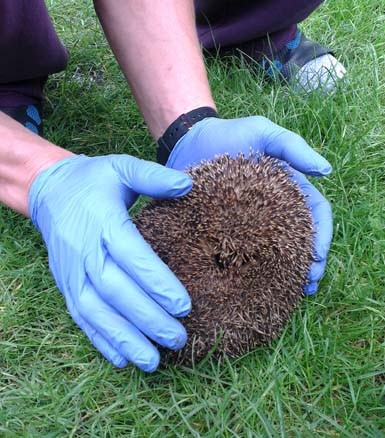 round and all the children oohed and aahed at it. As you can see it was an enormous hedgehog so it didn’t actually fit in the hotel. Fortunately we’d really gone to town last year in trying to woo our prickly friend and had created a whole entire hedgehog village at the bottom of the garden by putting a couple of up-turned, broken plant pots filled with straw around the hotel. The hedgehog fitted inside one of the flowers pots perfectly. It stayed for a couple of days and munched its way through all the cat food we put out. But yesterday morning the cat food was still there and it seems we have been rejected again.
round and all the children oohed and aahed at it. As you can see it was an enormous hedgehog so it didn’t actually fit in the hotel. Fortunately we’d really gone to town last year in trying to woo our prickly friend and had created a whole entire hedgehog village at the bottom of the garden by putting a couple of up-turned, broken plant pots filled with straw around the hotel. The hedgehog fitted inside one of the flowers pots perfectly. It stayed for a couple of days and munched its way through all the cat food we put out. But yesterday morning the cat food was still there and it seems we have been rejected again.